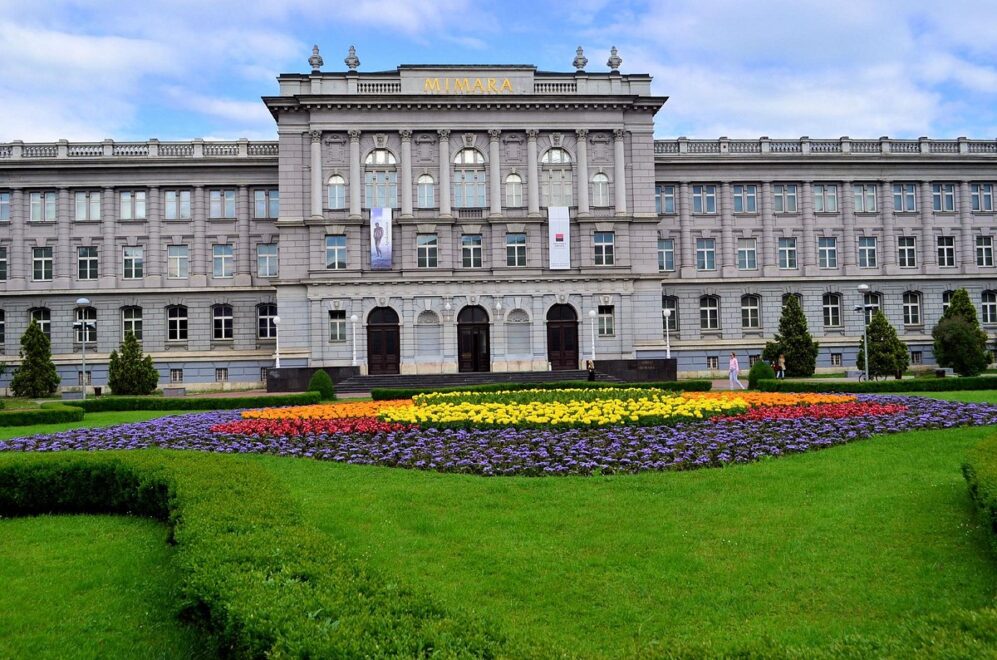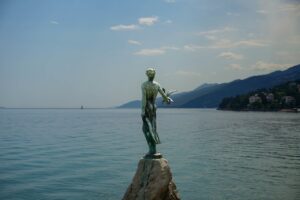Archeological Museum Zagreb
The Archaeological Museum in Zagreb stands as the direct successor to the National Museum, the capital’s oldest museum institution. Established in 1846, this inaugural national museum embarked on its public and organized endeavors. Presently, the museum boasts a collection exceeding 450,000 artifacts sourced from various origins, including some with significance surpassing local and regional heritage boundaries.
Home | Archaeological Museum in Zagreb (amz.hr)
Croatian Natural History Museum
Situated in a historic noble palace on the ramparts of Zagreb’s Upper Town, the Croatian Museum of Natural History is one of Croatia’s largest museums. Operating from 1797 to 1834 as the renowned Amadeo Theater, named after its founder, Hungarian Count Anton Amade de Varkony, the building has transformed.
Etnographic Museum Zagreb
Ethnologists and professionals at the museum systematically collect items about national culture, preserving, analyzing, and studying over 85,000 artifacts from all corners of Croatia during the Museum’s century-long existence.
etnografski muzej – Web etnografskog muzeja (emz.hr)
Klovičevi Dvori Gallery Zagreb
The Klovićevi dvori Gallery holds the distinction of being the largest gallery institution in Croatia. Offering a diverse range of artworks and cultural exhibitions, it covers a wide period from prehistory to the present day. Its programs never fail to captivate both local and international audiences, presenting innovative and unique perspectives on historical and contemporary art. Since its establishment in 1982, when it was known as the Museum Space (Muzejski prostor), the Klovićevi dvori Gallery has played a pioneering role in the Croatian art and cultural scene.
Homepage – Klovićevi dvori Gallery (gkd.hr)
Krapina Neandertal Museum
The Hušnjakovo area in Croatia is home to the Krapina Neanderthals site, which holds great global importance as the country’s first paleontological natural monument. This site is renowned for its extensive collection of artifacts and for being the largest habitat ever discovered of prehistoric Neanderthal people. The invaluable scientific value of the site is further enhanced by the groundbreaking research conducted by geologist Dragutin Gorjanović Kramberger.
Museum of Krapina Neanderthals (mhz.hr)
Mimara Zagreb
“When the Museum opens, it will bring me great joy as it represents the achievement of my lifelong goal and the fulfillment of my obligation to both my homeland and the people of Croatia.” – Ante Topić Mimara, Zagreb, December 31, 1985. This statement by Ante Topić Mimara encapsulates the patriotic drive that compelled him to generously donate his personal art collection to the Croatian people. The Mimara Museum, as it stands today, is a testament to his generosity and vision.
Museum of Contemporary Art Zagreb
The Museum of Contemporary Art Zagreb serves as a vibrant hub for the creation, exhibition, interpretation, and conservation of contemporary art in its various manifestations. Its primary objective is to foster and uphold an appreciation for contemporary art through the use of professional, innovative, and educational exhibitions and collections. This enables diverse groups of visitors to learn, express their creativity, and have a distinctive experience. As a multifaceted institution, it bridges the gap between heritage and the modern artistic landscape, encompassing visual, performing, and film art. In doing so, it actively contributes to and critiques our community.
Muzej Suvremene Umjetnosti, Zagreb (msu.hr)
Split City Museum
The origins of museum activity and the preservation of historic heritage in Split are intertwined with the Papalic Palace, where the Museum of the City of Split currently resides. In the late 15th and early 16th centuries, this grand Gothic-Renaissance palace housed a collection of ancient stone monuments from Salona, which was owned by the Papalic noble family of Split. Marko Marulic and Dmine Papalic explored the ruins of Salona, collecting and studying ancient inscriptions that Papalic had commissioned to be installed in the courtyard of his palace. These fragments remained there until 1885 when the majority of them were relocated to the Archaeological Museum building at Silver Gate.
Muzej Grada Splita – Jedan muzej 5 lokacija (mgs.hr)
Strossmayer Gallery of Old Masters Zagreb
In 1860, Bishop Josip Juraj Strossmayer of Đakovo and Srijem took the initiative to establish a South Slavic Academy in Zagreb. He gifted 50,000 florins to Josip Šokčević, the ban (Vice-Roy of Croatia), as an endowment for the Academy’s establishment. Additionally, he conveyed his desire for the Academy to gather the most brilliant minds and facilitate the creation of books in the national languages of the Slavic South. Furthermore, the Academy was intended to encompass all areas of human science.
Strossmayerova galerija starih majstora – Hrvatska akademija znanosti i umjetnosti (hazu.hr)
Technical Museum Zagreb
The Technical Museum stands as a one-of-a-kind institution in Croatia, serving as the country’s national museum for science and technology. Its purpose is to gather, investigate, and exhibit valuable scientific and technical artifacts and records that contribute to the research, preservation, and dissemination of this heritage. The museum provides a space for visitors to engage in creative and interactive exploration of technical heritage, while also fostering an understanding of fundamental scientific concepts and the latest advancements in technology.
Vukovar Municipal Museum
The Vukovar City Museum, established in 1946, had its first permanent exhibition unveiled in 1948 thanks to a generous donation from Dr. Anthony Bauer. Before 1991, the museum consisted of four distinct sections housed in separate buildings. These included the City Museum, which showcased Native Collections within the Eltz Castle, the Bauer Collection and Art Gallery, which featured a comprehensive display of modern Croatian art in the Post Office Building, the Memorial Museum honoring Nobel Prize laureate Lavoslav Ruzicka at his birthplace, and the Museum of Recent History located at the Workers’ Home.




